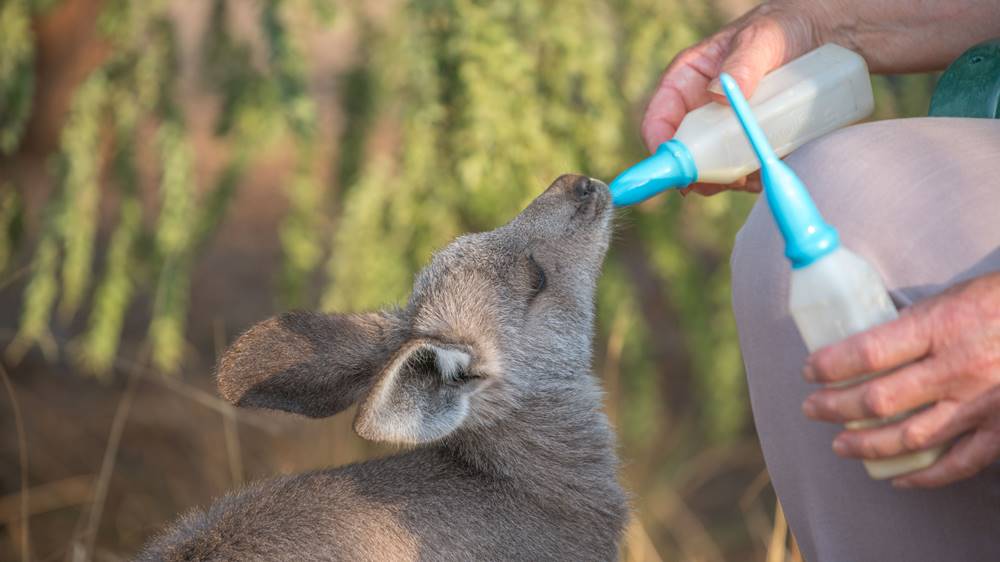
Kangaroos and wallabies can be found in various habitats throughout Australia, and there are protective measures in place to ensure their preservation. However, a significant number of kangaroo and wallaby species in New South Wales (NSW) are currently classified as endangered.
Appearance
Kangaroos are the largest of the marsupials. Like other large macropods (macropod means big foot) their hind limbs are very large, much bigger than the forelimbs which are short and lightly built. Their tails are long and muscular. There are fifteen species of kangaroos and wallabies in NSW including: Common, Black and Antilopine Wallaroos, Eastern and Western Grey kangaroo and the Red kangaroo. The Red Kangaroo, the largest of all kangaroos, can weigh up to 90kg and grow to 1.8 metres high. At full speed they have been known to cover a distance of 8m effortlessly in one leap. They spend a large part of the day lying in the shade and are most active in early morning and late evening (after sunset). Kangaroos and wallabies are herbivores, and mainly eat grass. Some species will also consume leaves, herbs, ferns, fruit and flowering plants. Kangaroos need little water except in drought as they obtain most of their moisture from dew covered grass and leaves as well as moisture from green grasses and plants.
Breeding
Kangaroos breed throughout the year. Newly born joeys, weigh less than 1 gram and make their way into the pouch unassisted by their mother. They joey will remain in the pouch until it is 5 – 9 months old. The female will mate again after giving birth but the embryo doesn’t develop until the first joey leaves the pouch. The joey emerges permanently from about 10 months and then stays with its mother, continuing to suckle until it is 12–18 months old.
Rescuing Macropods
Adult RescuesPlease do not approach any injured adult macropod. Only rescuers with specialist training can approach injured adults safely. If you find a sick or injured adult macropod please call WIRES Rescue Office 1300 094 737 and wait for assistance. The rescue team are available 7 days a week. If you find a seriously injured adult after hours e.g. hit by a car late at night, please contact the local police and they will attend.
Joey RescuesIf you have found a female macropod that has recently been killed, perhaps hit by a car, please check for joeys. Please check inside the pouch and also in the surrounding area as the joey could have been bumped out of the pouch, or it may be scared and hiding in nearby bushes. If you live near the area it is a good idea to check the area a few times during the day to make sure no joeys are present. If you find a sick, injured or orphaned joey it needs immediate care. Please contact WIRES to report the rescue using the details above. Please keep it in a warm, dark, quiet place e.g. wrapped in a towel or sheet in a ventilated carrier while you transport it to the nearest vet or wait for a rescuer. If you go directly to the vet, please let WIRES know which vet you have taken the joey to.
We will follow up with the vet directly to bring the joey into care after it has been vet assessed and received any necessary treatment.
To access 24/7 rescue advice and assistance for sick, injured and orphaned native animals call 1300 094 737, or fill in the online rescue form.
Sign Up for Wildlife News
Stay in touch and get our regular rescue stories, WIRES updates and a free copy of our 15 Ways to Help Wildlife ebook
